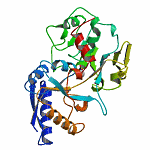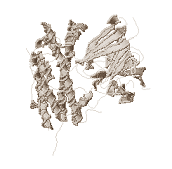|
Definition: "An ergogenic aid is any substance or phenomenon that enhances performance "
|
|
||||||||
05.11.2009 |
|
|
Growth hormone pill works
If you need growth hormone and you don't like injections, you've got a problem. Growth hormone is a protein hormone that breaks down quickly, which means you have to inject it daily. Athletes who use growth hormone for doping purposes usually inject several times a day. That's why researchers have been working on an oral version of growth hormone for a while. It's a challenge, because the human digestive system cuts proteins up into little pieces whenever it gets the chance. Growth hormone is no exception.
Transferrin carries growth hormone through the gut cells into the body, the researchers discovered when they did experiments with cells in a test tube. In the next stage of the experiment they gave the growth hormone to rats that had no pituitary gland and therefore could not manufacture their own growth hormone. The figure below shows how the rats reacted to injections containing the new growth hormone analogue. Control = injections containing nothing; GT = a transferrin-gh-molecule; GHT = a different transferrin-gh-molecule; rGH = ordinary recombinant growth hormone.
The new construction remains active, the researchers discovered. The rats put on weight.
But does the new compound still work when it's administered orally? One does, according to the figure below, which shows the effect on bodyweight after seven days of oral administration. The rats were given the oral growth hormone in combination with a protease inhibitor. Proteases are enzymes that break down proteins. In the case of GHT the effect is statistically significant, but injections are still more effective.
The researchers conclude that it is possible to make an oral GH preparation by attaching growth hormone to transferrin molecules. This approach is doubly attractive to pharmaceutical manufacturers because the researchers have shown that you can produce readymade new analogues with genetically modified cells.
The research was paid for by Pfizer.
Source:
More:
|
|




